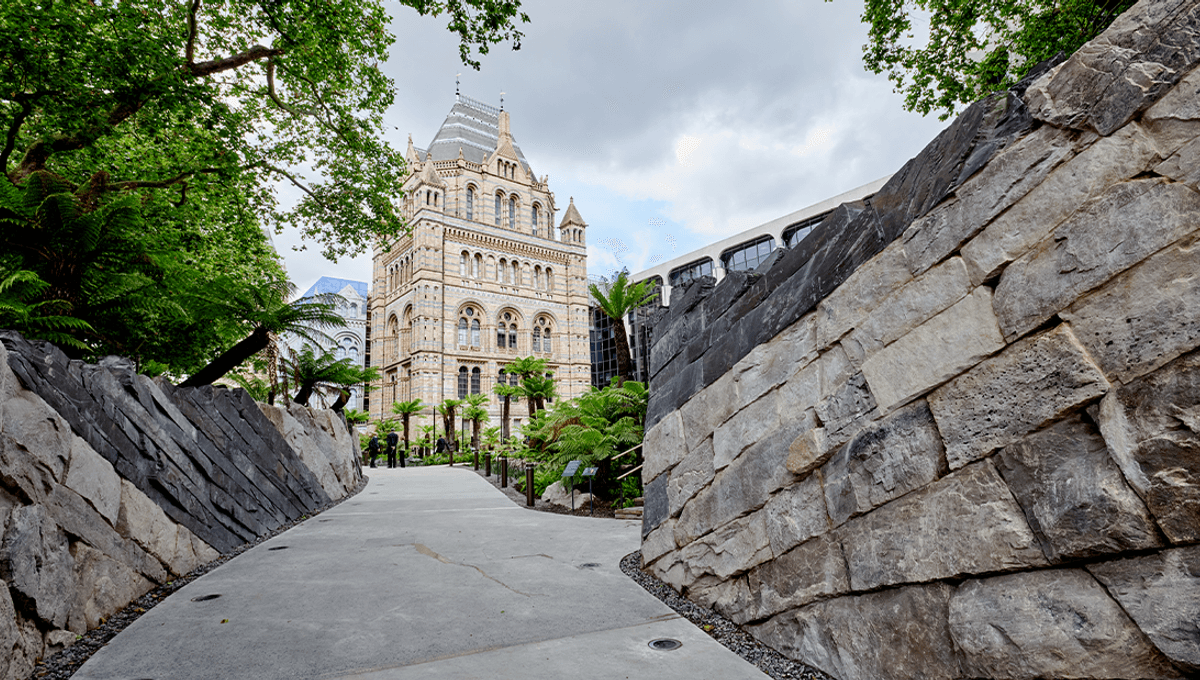
Take a walk past The Natural History Museum, London, and transport yourself back in time with their brand new Evolution Garden. This five-year-long project to transform the space at the front and sides of the museum was unveiled last week and marks a remarkable journey through 2.7 billion years of evolutionary plant biology. We caught up with Dr Paul Kenrick to find out more about what goes into making an Evolution Garden in the modern age.
As well as the impressive bronze statue of Fern the diplodocus, the gardens themselves have been transformed to replicate Earth as it would have looked during the different time periods as far back as the Carboniferous and Jurassic eras. Dr Kenrick is the Principal Researcher at the Natural History Museum and looks closely at the fossil record to inform the decisions about the gardens. But just how hard is it?
“It’s quite challenging actually”, explains Kenrick as we stand in the part of the garden representing the Carboniferous period roughly 300 million years ago. Large amounts of that plant life is extinct, but tree ferns share a growth form with some of the earliest tree species from the forest ecosystems we know about and are used to form the principal part of the new forest.
One of the main differences between Earth’s plant life today and back when the dinosaurs roamed is the lack of flowering plants. This means the environment is largely green, without the color we see today, presenting another challenge to the team.
Mining and quarrying for coal have literally unearthed examples from the fossil record of the Carboniferous, helping researchers like Kenrick discover what was growing in that ecosystem. A fossilized tree trunk from a sandstone quarry in Edinburgh, Scotland stands proudly at one end of the fern bed. Back in the Carboniferous the land was much more equatorial, explains Paul, so we would have been looking at much more of a humid, “tropical rainforest type environment”.
In the Jurassic section of the garden, we come to pieces of fossil wood under the tail end of Fern, one large specimen from Wiltshire and two from Dorset. “These are pieces of wood that are 145 million years old, and they have been turned to stone, literally turned to stone, so they are petrified.”
Just behind is a plant called Cycas revoluta from Japan, reminiscent of the low flora that dinosaurs would have encountered. The plant is toxic possibly as a survival strategy to avoid predation.
Wollemi pines (Wollemia) dotted throughout the next section bring to mind conifers that would have grown alongside the dinosaurs, while palms (Trachycarpus) which date back to the Cretaceous produce fruits. In the shallow rill, horsetails from the Mesozoic period run along the bottom of the slope as they favor a wetter growing space.
Overall, the garden is a total delight, from the science behind the carefully chosen plants to the inlay fossil tracks that criss-cross the paths. But don’t just take our word for it, see it for yourself at the Natural History Museum, London.
Source Link: How To Create A Jurassic Garden